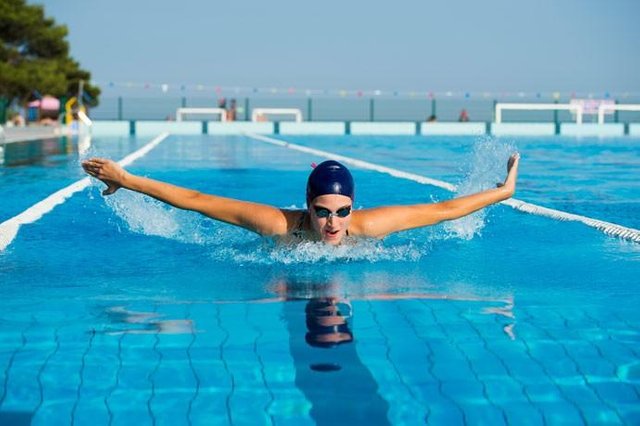Pool effectively burns calories, follow this style to be slim
 Enjoy-swimming.com
Enjoy-swimming.com
Swimming will train many muscles, as well as stimulate the lungs and heart work more optimally to circulate oxygen. Each style of swimming has the ability to vary in burning calories. Well, what is the most effective style of fat burning?
Back style
This swim style looks easy, because you are quite supine and float on the water. But to apply it need the strength of shoulder muscles and stomach prime. Like you weigh 70 kg, and swim for an hour, then as many as 493 calories will burn.
Frog Style
This pool style is higher in calorie burning rate compared to backstroke. Because it can effectively burn 704 calories. Although this style movement is more slow than other swimming styles. Because when swimming with frog style, then you have to hit the water by relying on the strength of the legs and arms.
Freestyle
You will swim with a sloping position and also cut the water. This style feels lighter than other swimming styles. The ability to burn fat is the same as frog style, which reaches 704 calories per one hour.
Butterfly Style
This swimming style is considered the hardest to do. Because you have to have a flexible body. The arm should also be very strong, as it is relied upon in rowing forward, as well as breathing air. But the struggle was sweet fruit. When done exactly for an hour, it can burn as many as 774 calories.
So, for those of you who feel overweight, and want to lower it quickly and naturally can apply the butterfly style. Let the results be optimal, then do it regularly yes ...
it is a great workout... I love to swim outside in florida when we go in the winter... I don't like indoor pools much
Oww great, ya me too i don't like when swim indoor pools
This post has been ranked within the top 80 most undervalued posts in the second half of Aug 18. We estimate that this post is undervalued by $14.93 as compared to a scenario in which every voter had an equal say.
See the full rankings and details in The Daily Tribune: Aug 18 - Part II. You can also read about some of our methodology, data analysis and technical details in our initial post.
If you are the author and would prefer not to receive these comments, simply reply "Stop" to this comment.